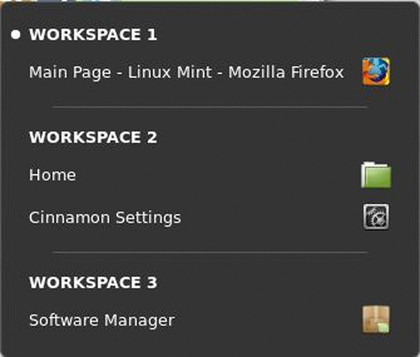How Mint became one of the most popular Linux distros
We speak to the creator of Mint, Clem Lefebvre
In particular, we got to enjoy the pleasures of Mate and Cinnamon - considered the true Linux user's desktop environments. In the end, however, after the desktop comparisons, we are left with the available software and the ease of using the operating system. In both cases, the software is similar, as both Mint and Ubuntu share their basic package parentage.
The obvious difference is the Mint-developed, specific additions and innovations, which when combined within the whole package of the operating system, make for a better experience. "I don't like comparing Linux Mint to other distributions, especially as competitors, and especially Ubuntu," says Clem. "They're not just another distribution, they're also an upstream component, which is used in about half of our releases."
"I've often heard people describe Linux Mint as 'Ubuntu done right', or 'what Ubuntu should be'. Although I appreciate when people like what we do, our goal was never to 'improve' Ubuntu or to produce a 'better' Ubuntu. Linux Mint is a different project altogether, with its own goals, its own direction and its own idea of what it should be. Whether you run a Debian-based, an Ubuntu-based, or tomorrow an RPM-based Mint, or a Mint with its own base, it will always feel and run like Mint."
Desktop design

Is the Mint vs Ubuntu debate really only about the look and feel of the desktop? To many that answer is yes; but to those who have used Linux for many years, the answer isn't quite so black and white.
Firstly, there's the political angle: the Linux community has been furrowing its collective brow over Canonical's and Ubuntu's choices in recent years.
With the release of Ubuntu 12.10, the community has finally rolled up its shirt sleeves and prepared to do battle over a number of issues relating to features such as the Amazon shopping lens, which allegedly transmits data to unsecure servers; the ever increasing tablet-centric environment; the lack of ability to customise the operating system; the increasing need for a more powerful computer just to run the basic OS layer; the sudden appearance of a 'how much would you pay for Ubuntu' voluntary (at the moment) donation page; and the overbearing feeling that Valve's interest in Linux, in the form of the closed-source Steam for Linux client, is going to consume the freedom Linux and open source was built on.
"I think [Ubuntu's Amazon advertising tie-up] is clumsy and lacks elegance," says Clem. "That said, we don't ship Google by default, so they're not the only ones creating income sources and trying to make their distribution viable in the long term. I have no idea how much their development costs and how much these Amazon ads generate. Developers cost money and users hate to be taken hostage, so it's important to gather funds but equally as important to do so without hurting the user experience."
Get daily insight, inspiration and deals in your inbox
Sign up for breaking news, reviews, opinion, top tech deals, and more.
Yes, advertising, sponsorship and community donations have fuelled the finances of Linux Mint projects, but it has never been shoved down the throat of the users. And the commercial aspect of any advertising has never appeared in the functioning of the operating system itself.
Mint has also managed to avoid the tablet-esque desktops that its brethren have so readily adopted. We imagine that Mint will offer such elements when the time comes, but on the whole it is a desktop operating system that has, pleasantly surprisingly, catered for the desktop user.
To finalise the argument, the latest version of Linux Mint can run just as effectively on a vintage dual core laptop, with a mere helping of RAM, as it does on an eye-watering Core i7 with gigabytes going spare.